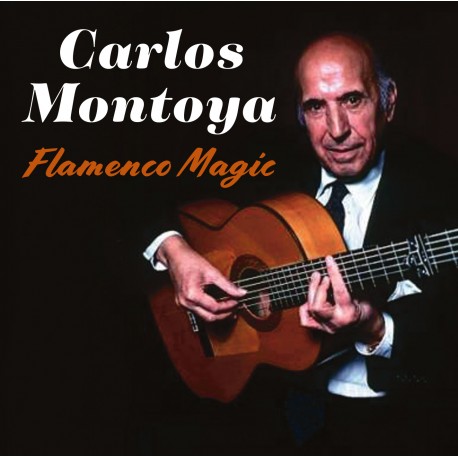 View larger
View larger
Carlos Montoya: Flamenco Music
New product
The greatest Flamenco guitarist of his generation, Carlos Montoya plays some of his most beloved songs.
bandcamp
$9.99 USD or more
More info
Carlos Montoya was born to a Gypsy family in Madrid, Spain, on December 13, 1903 to a Gypsy family; from an early age he showed a keen interest in music. He was the first to present Flamenco as serious music to concert audiences.
Primarily self-taught, the young Montoya learned by playing for singers and dancers at the cafes cantantes in Madrid, notably for La Teresina and La Argentina. He later toured with La Argentina as her accompanist. Montoya began to give flamenco guitar recitals in 1948; thereafter he toured frequently throughout the world. He was the first flamenco guitarist to perform as a soloist with major orchestras, and he appeared often on television.
His playing over the years was an ever-growing process, and it developed dramatically over those years. This is not recording of arrangements, this is an unaccompanied flamenco recording, maybe one of his best.
Throughout the Fifties and onwards, he continued to perform regularly on television and solo guitar recitals. Montoya recorded over 40 albums, some traditional flamenco and others with orchestras. He remained in the USA and died on March 3, 1993, still acknowledged as the finest exponent of the flamenco guitar.
FANDANGO
This is not a dance rhythm, but a freer form based on songs from the province of Huelva. Most Americans have heard the term Spanish Fandango but don’t know what it is. Here, at last, they can hear a fine example.
RONDENA
A Rondena is a palo or musical form of flamenco originating in the town of Ronda in the province of Málaga in Spain. In common with the other palos originating in Malaga, the Rondena antedated Flamenco proper and became incorporated into it during the 19th century.
MACARENA
This is the only piece on these recordings which is an arrangement of a song by another composer. It is based on “La Virgen de la Macarena” by B. Bautista Monterde. The melody is often played at the beginning of the bullfights, particularly in Mexico. Carlos Montoya took this melody, played it as a Taupo Flamenco, added his own inspiration and created this exciting piece.
LEVANTE
The Levante is the Eastern part of Spain, particularly around Cartegena and Limares. This music is the pure Cante Janda of the gypsies. Not all Flamenco artists are gypsies, with that indefinable something the others would sell their souls for.
SOLEA
Flamenco grows and changes continually. This solo combines the “Solea por Medio” and “Toque de Cana.” “La Cana” is the older and is heard first, and again in closing. Out of these forms grew much of contemporary flamenco music.
CARIBE A FLAMENCO
This rhythm dates back to the Spanish colonization of Cuba. Of course, a great deal has been said about the influence of Spanish music on the music of Latin America. There is also a reverse influence. This is a Guajira with a lilting rhythm of the Caribbean. This rhythm was brought back to Spain, and here it is heard in Flamenco.
ZAMBRA
Much has been said about the influence of the Moors on the music of Spain, and of all their music, the Zambra shows the strongest influence. In the Sacromonte on the hills of Granada, where the gypsies’ caves are, one can still hear Zambras.
TARANTO
Also Cante Jondo or Cante de Levante, its origins are lost in the early migration of the gypsies. In fact, this is played in a very old musical scale. For this Rondena entitled “Taranto,” the third and sixth strings are both tuned a half-step lower than normal. It is sad to say that the Rondena of Taranto is seldom played in Spain nowadays. This is purest Flamenco.
AIRES DE GENIL
This is a very catchy dance rhythm called Garrotiu from the Puente de Genii in Andalusia. It was played and danced as a light change of pace during the Cuadro Flamenco. It was done en chufla or in comic style.


